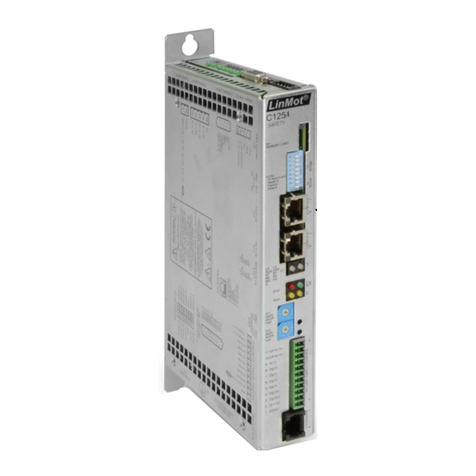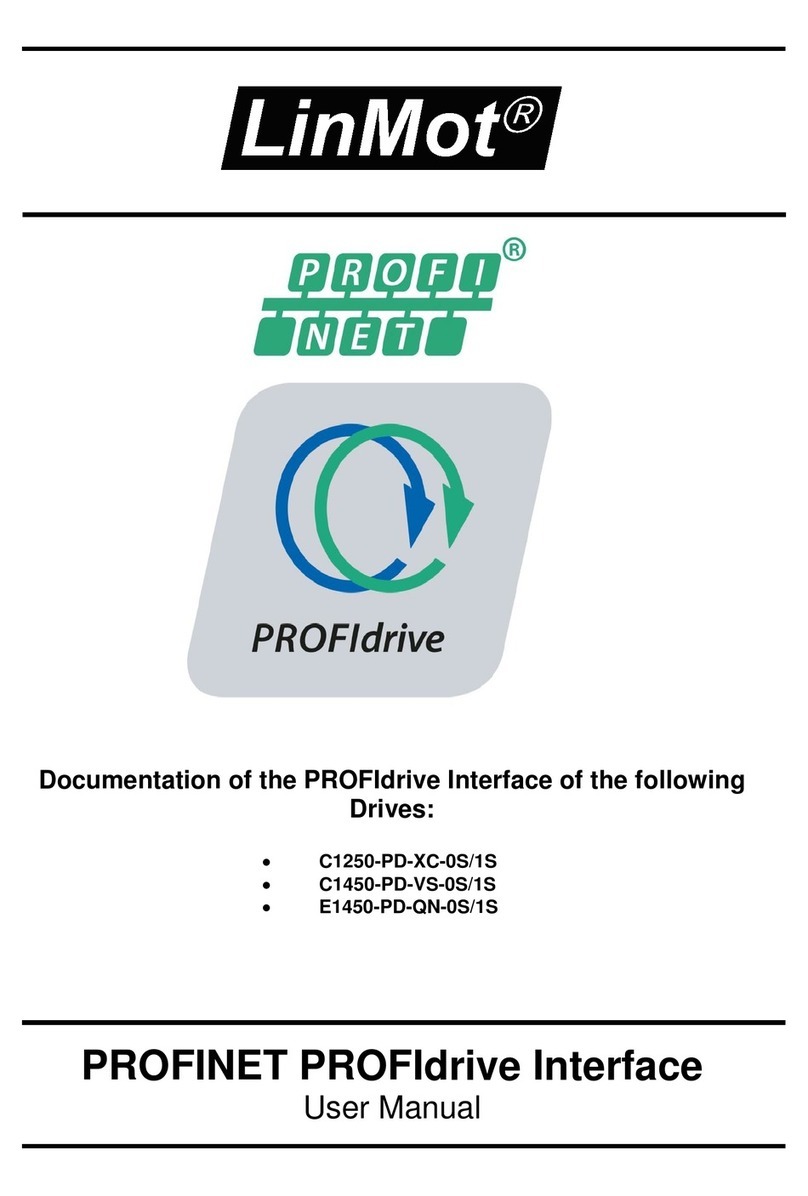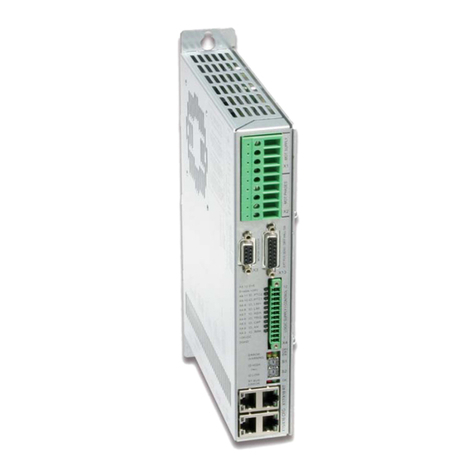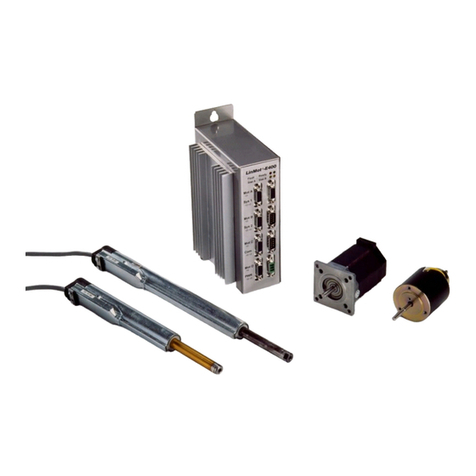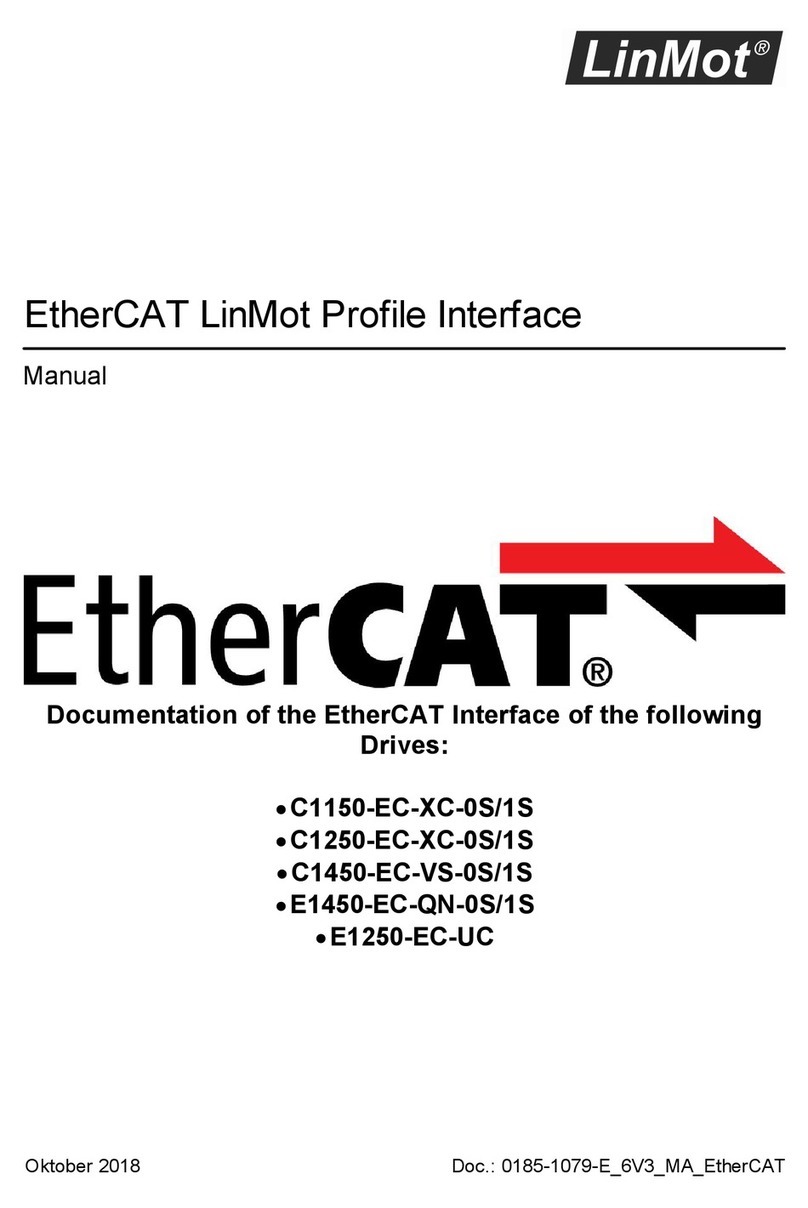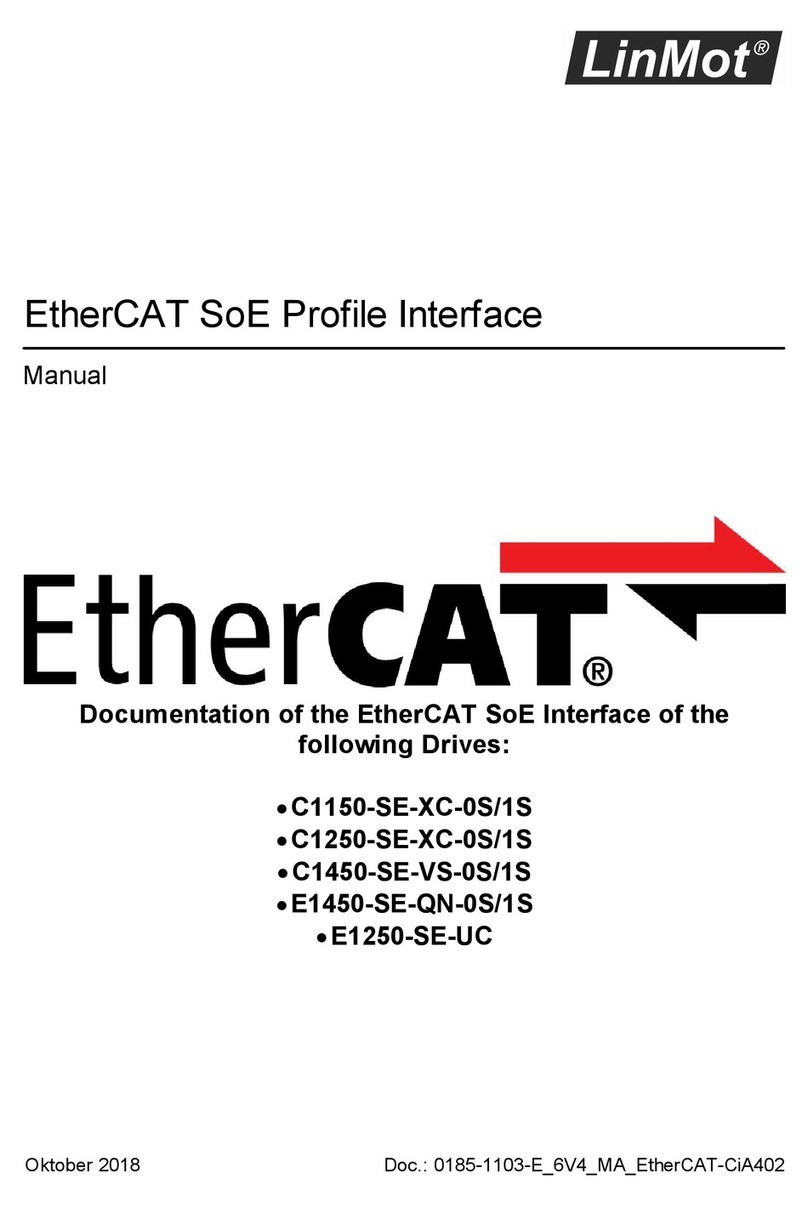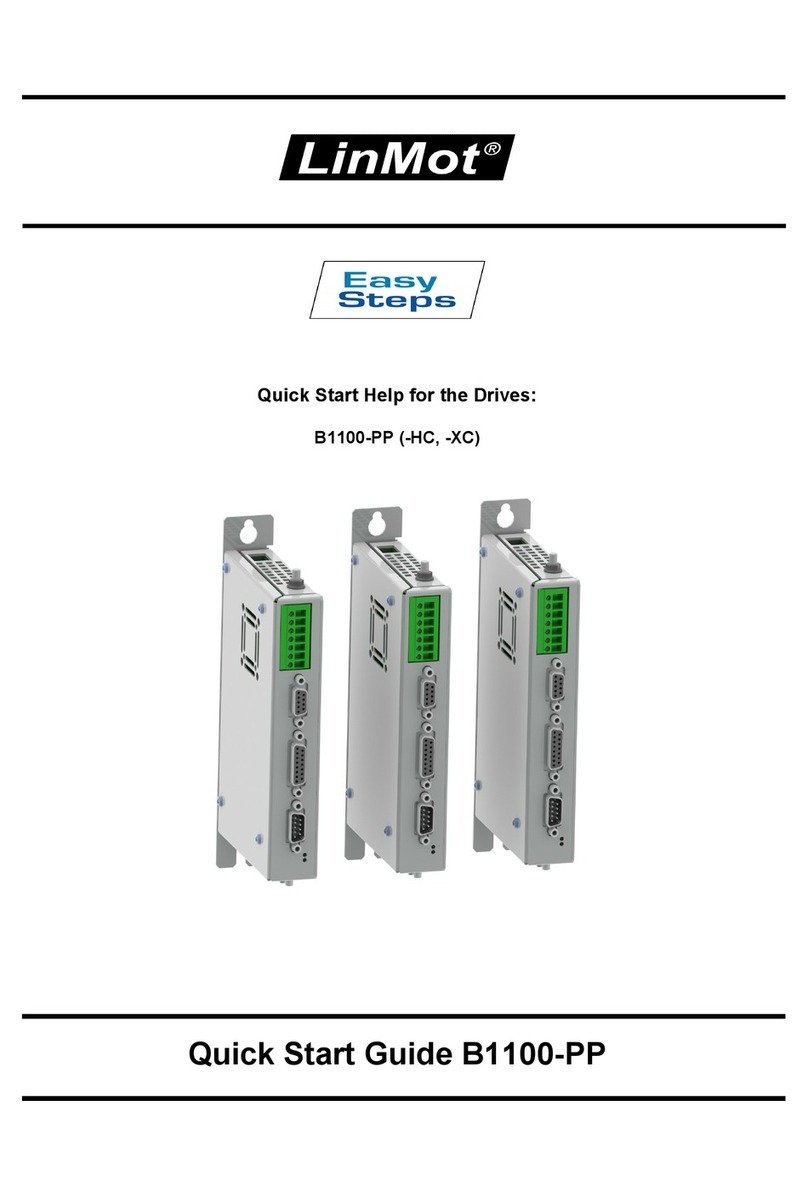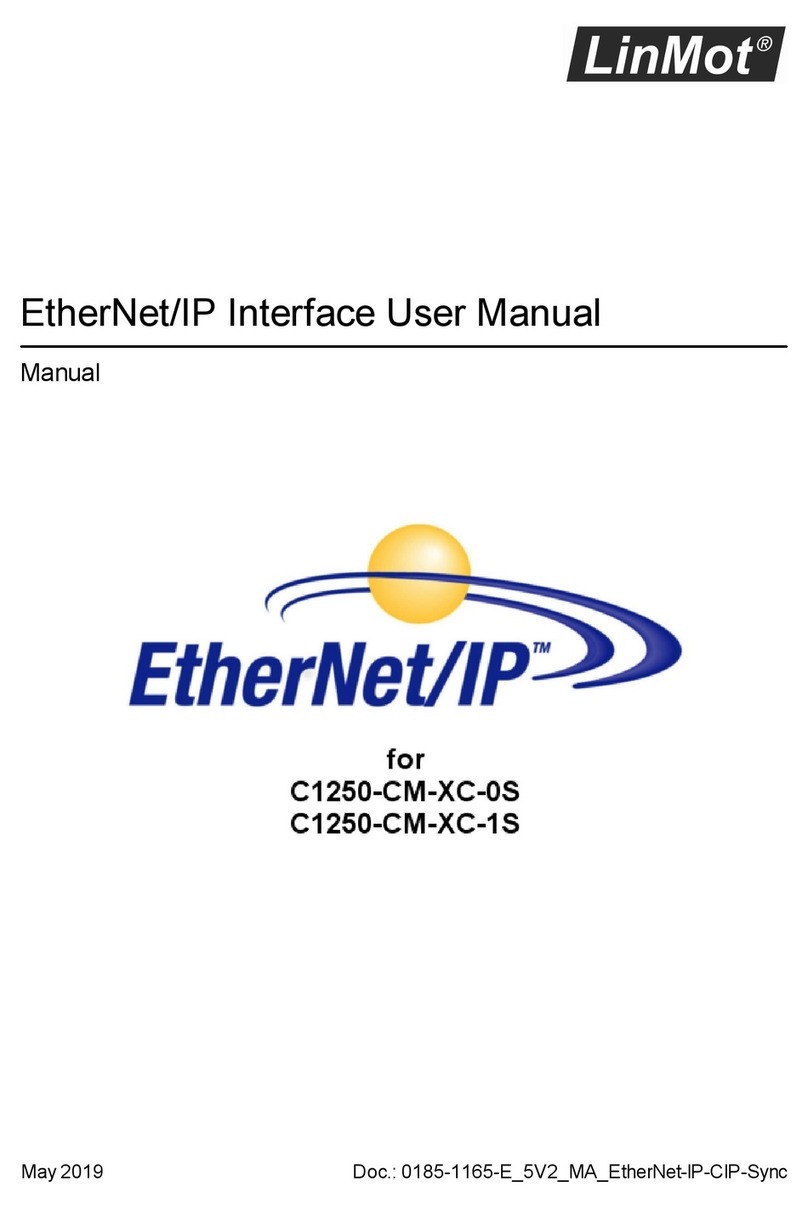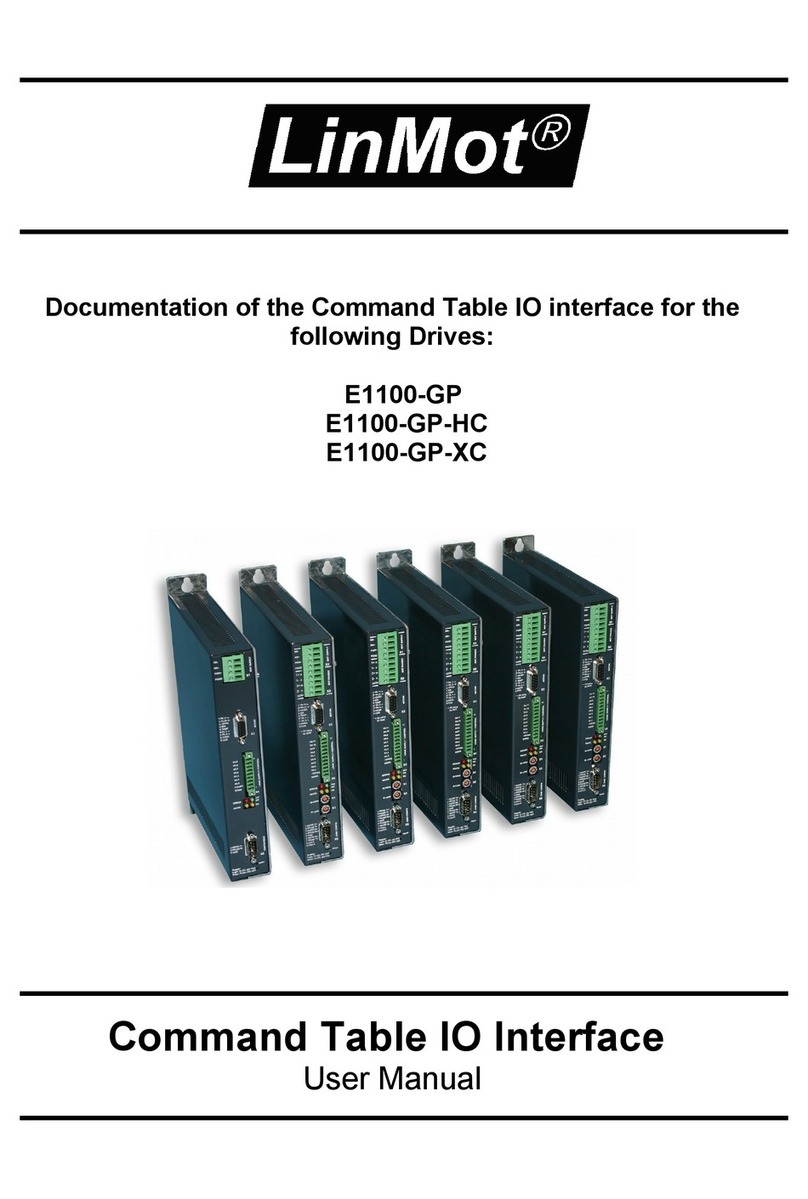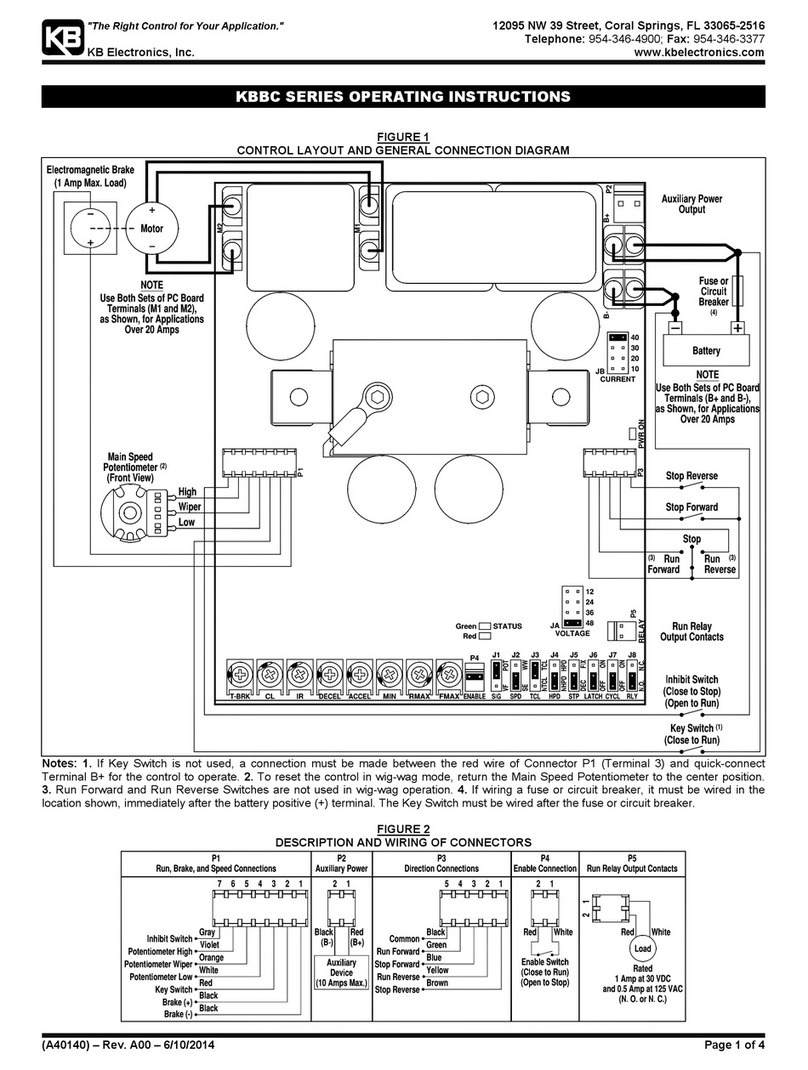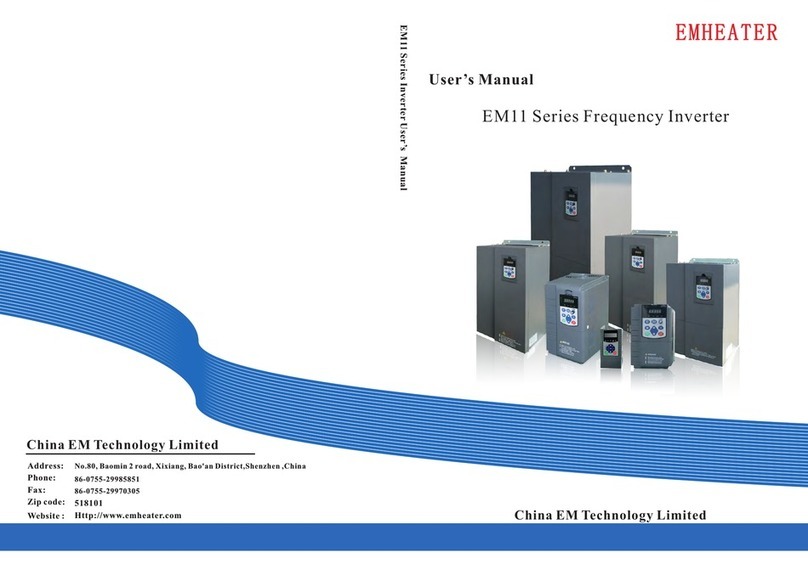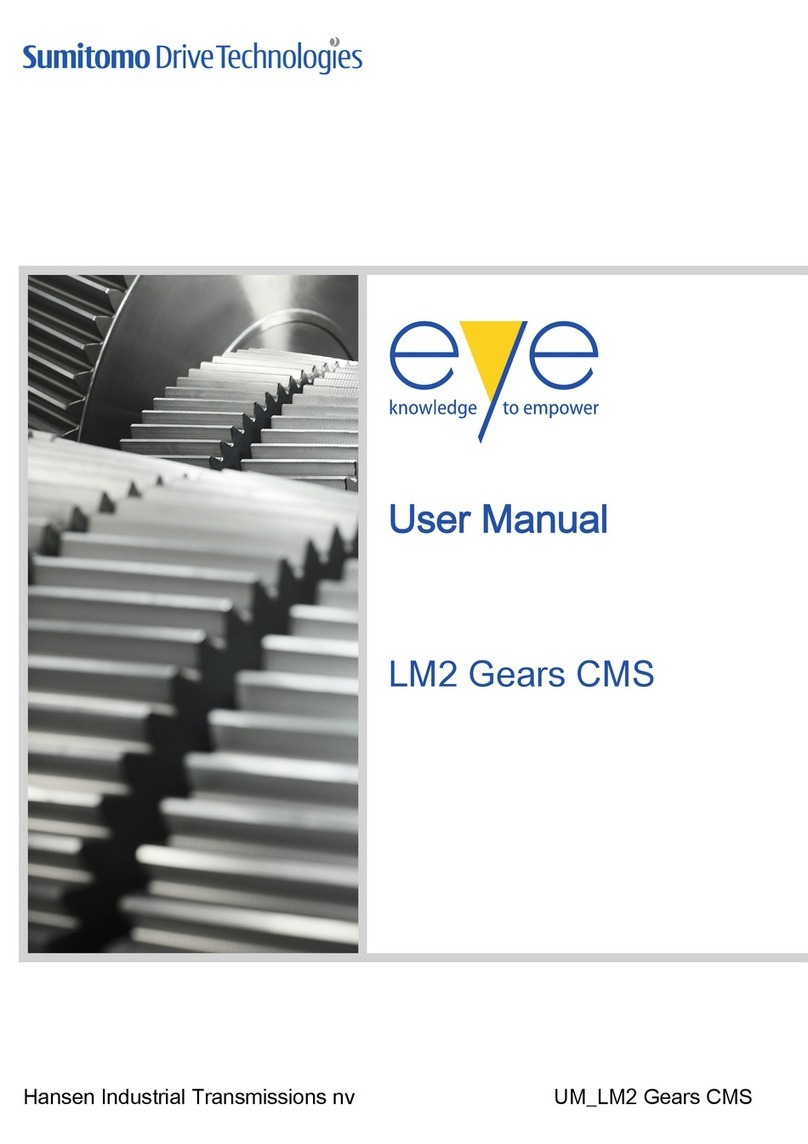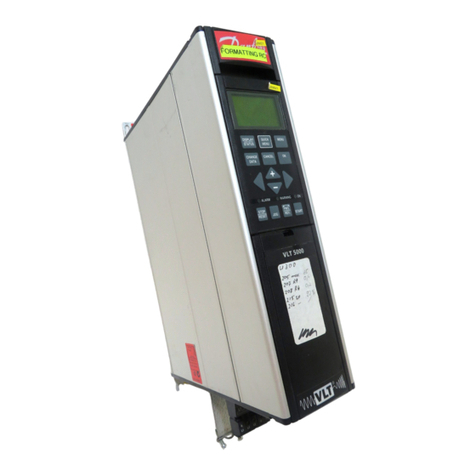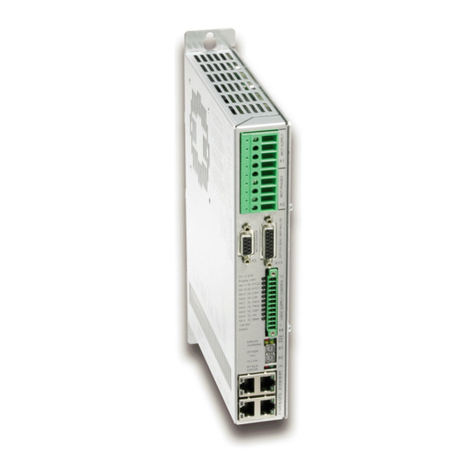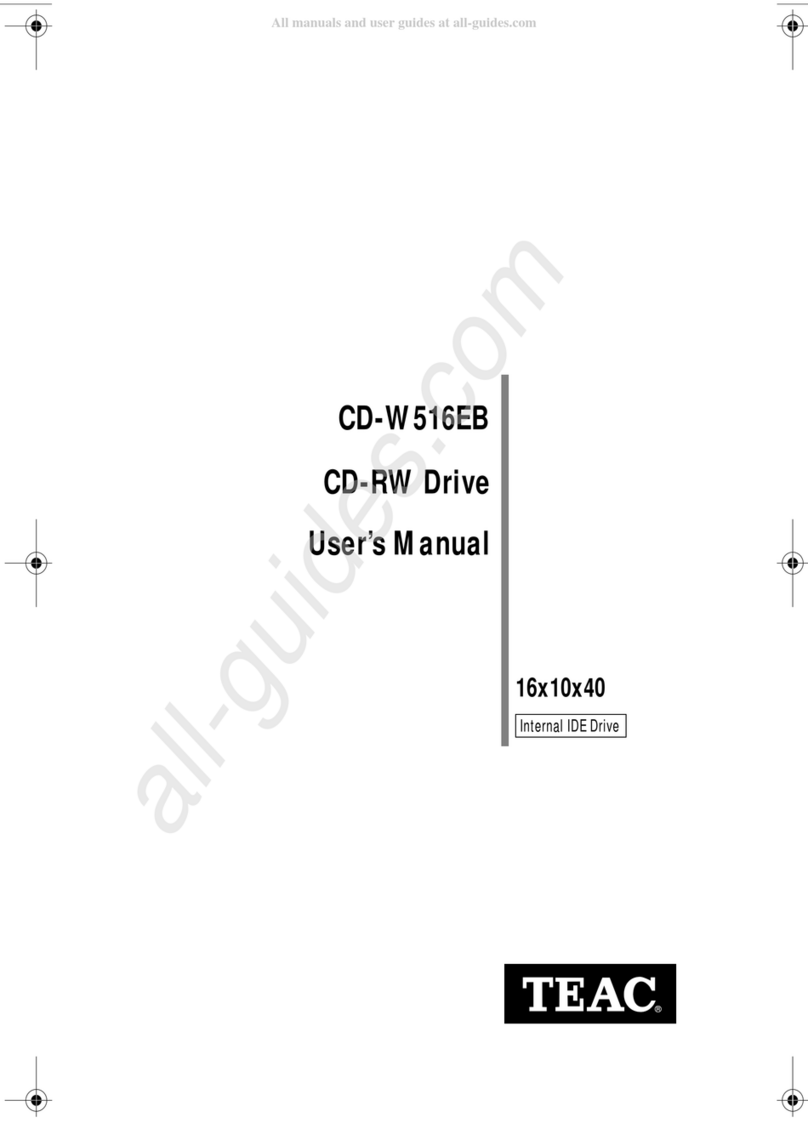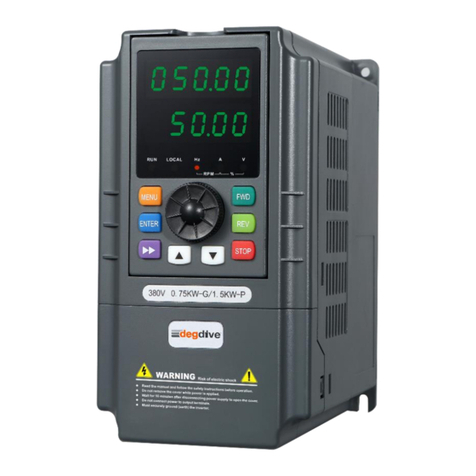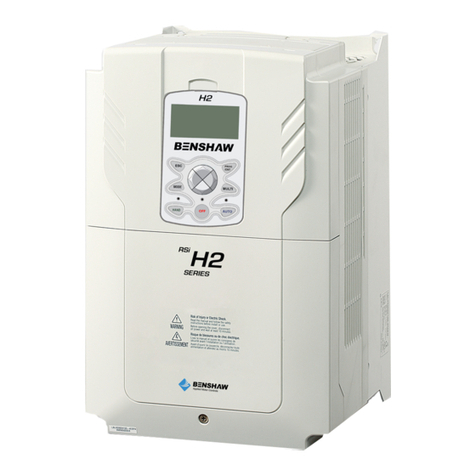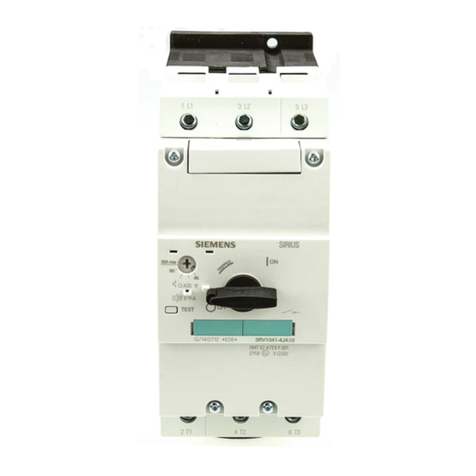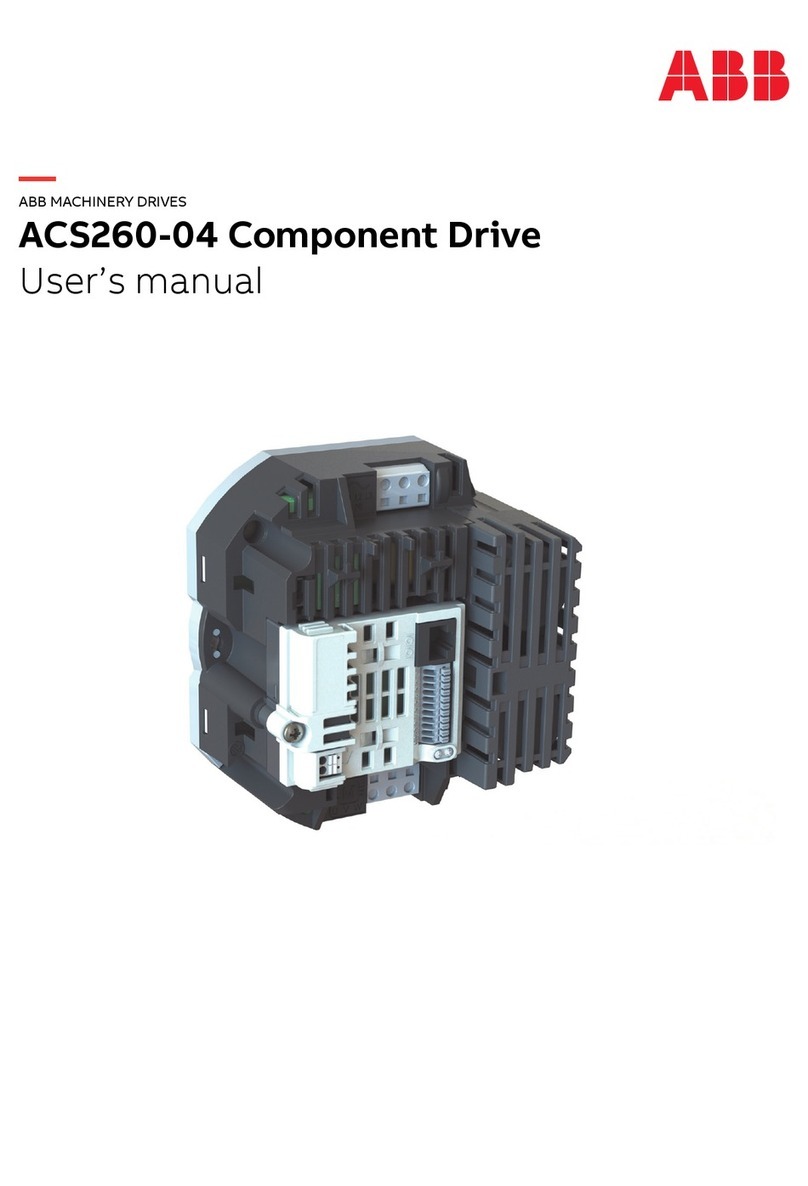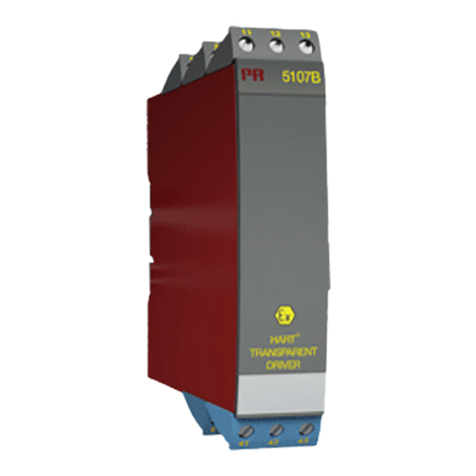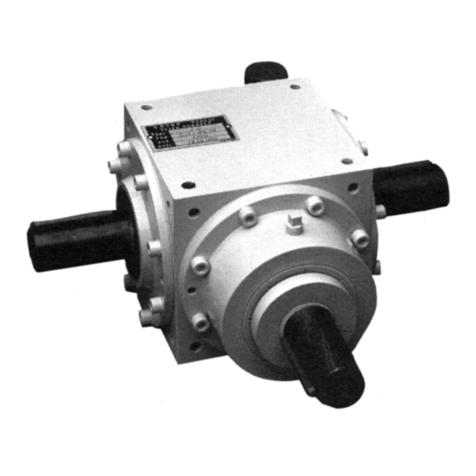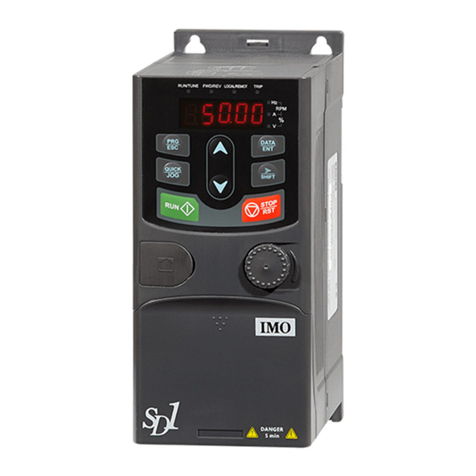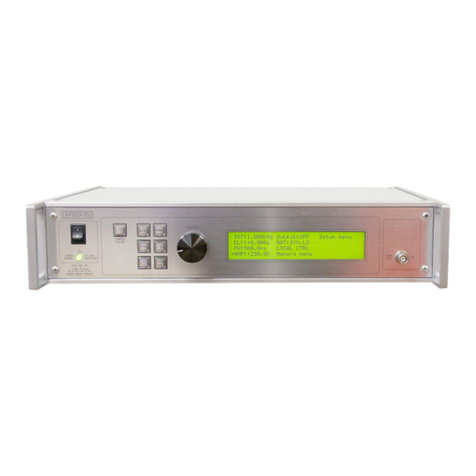Header 3F2xh: Bestehorn VAJ 16 Bit Go To Pos UInt16 -
1. Par 2 Target Position SInt16 Scaled
2. Par 4 Maximal Velocity UInt16 Scaled
3. Par 6 Acceleration UInt16 Scaled
4. Par 8 Jerk UInt16 Scaled
Bestehorn Motion Profile, regarding the limitations maximal jerk, acceleration and maximal
speed. With 16 bit motion parameters: UPID 1455h for Position, UPID 1456 for Maximal
Velocity, UPID 1457h for Acceleration and UPID 1458h for Jerk Scaling.
3.2.12 Bestehorn VAJ Go To Pos From Actual Pos (3F4xh)
Name Byte
Offset
Description Type Unit
Header 3F4xh: Bestehorn VAJ Go To Pos From Actual Pos UInt16 -
1. Par 2 Target Position SInt32 .1 um
2. Par 6 Maximal Velocity UInt32 1E-6 m/s
3. Par 1 Acceleration UInt32 1E-5 m/s2
4. Par 14 Jerk UInt32 1E-4 m/s3
Bestehorn Motion Profile, regarding the limitations maximal jerk, acceleration and maximal
speed. The command execution starts immediately when the command has been sent. This
command should be used if the Actual Position does not match with the current Demand
Position value, but it can be assumed that the motor stands still (Actual Velocity assumed to
be zero, e.g. because the motor stands on a hard stop). This can happen after a Press
command\c where the actual motor position is defined through external conditions and the
motor could not and had not to follow the demand position. By starting this command, the
former accepted difference between Actual Position and Demand Position can be eliminated.
3.2.13 Bestehorn VAJ ncrement Actual Pos (3F6xh)
Name Byte
Offset
Description Type Unit
Header 3F6xh: Bestehorn VAJ Increment Actual Pos UInt16 -
1. Par 2 Position Increment SInt32 .1 um
2. Par 6 Maximal Velocity UInt32 1E-6 m/s
3. Par 1 Acceleration UInt32 1E-5 m/s2
4. Par 14 Jerk UInt32 1E-4 m/s3
Bestehorn Motion Profile, regarding the limitations maximal jerk, acceleration and maximal
speed. The new Target Position value will be determined by the firmware. It is calculated by
adding the Position Increment argument to the Actual Position value (relative move). The
command execution starts immediately when the command has been sent.
3.2.14 Bestehorn VAJ Go To Pos On Rising Trigger Event (3FAxh)
Name Byte
Offset
Description Type Unit
Header 3FAxh: Bestehorn VAJ Go To Pos On Rising
Trigger Event
UInt16 -
1. Par 2 Target Position SInt32 .1 um
2. Par 6 Maximal Velocity UInt32 1E-6 m/s
3. Par 1 Acceleration UInt32 1E-5 m/s2
4. Par 14 Jerk UInt32 1E-4 m/s3
Page 1 /15 User Manual Sinoide Application / 6/12/2 13 NTI AG / LinMot















